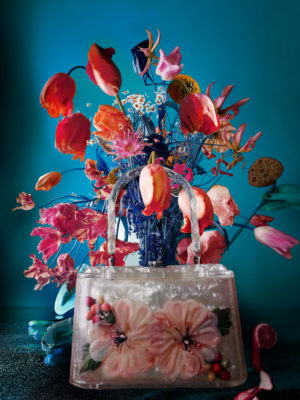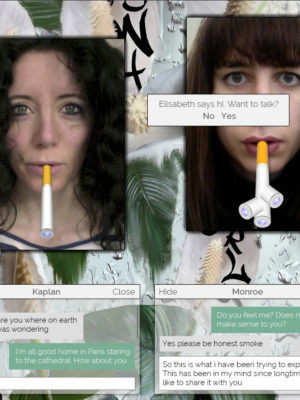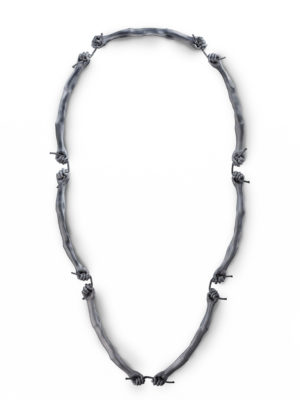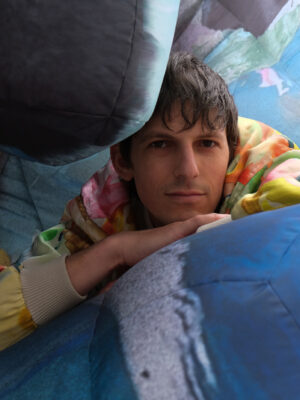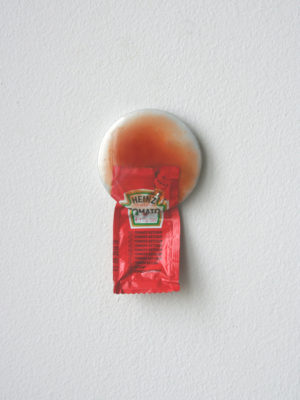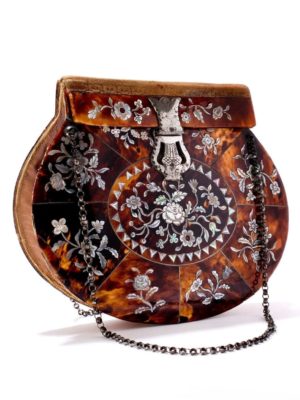
Manon Schaap
Until now, the house – I like to call it a ‘house’ and not a ‘museum’ – has been fairly closed. It is a beautiful, historic space − a true pearl on the canals of Amsterdam − but its exhibtion spaces were quite closed and rather dark. In these times, you can no longer be a closed museum, so what we are doing now is opening up the house by opening up the bags, so that their stories come out. When you visit, we want it to feel like you are visiting someone’s home, a special personal space. We will show you relevant stories what we think is important, in fashion, design, métier and society. Tassenmuseum Amsterdam will become a dynamic museum, a sparkling place of wonder and surprise, and a dynamic house that reflects on its history, the collection but also the people who once lived here, such as Jeltje de Bosch Kemper, an early feminist and fighter for women’s rights and financial independence. Next to this, we will focus on the present and future of innovation and development of fashion and design in relation with the bag. Our focus will be the subject and not just the object.
We are thinking ‘out of the bag’, without limitations. For example, we will show what is in the bag, both metaphorically and literally. A bag is not always something you carry in a literal sense; a bag also includes your emotional ‘baggage’ and identity. Handbags are all about identity, beauty, and creativity. For us, it is not only about the person carrying the bag, but also who made the bag and what they were thinking when they made it. What does their craft say about the society they were part of? Why do these bags exist? Why were they made at a certain point in time? What was the zeitgeist of that period? We can become more present even eccentric – more ourselves. We are a small museum, meaning we can be different, more specific in what we do and show but our collection will always give us ‘handles’ for a starting point. We will surprise you with unexpected stories and share different meanings.
With everything we are planning to do in the very near future, we are aiming to open doors and windows, to let fresh air and light in, both literally and figuratively. We are very much in favour of collaboration, because we recognise that we do not have all of the knowledge by ourselves. We want to share, but we want to learn as well. We believe in interaction and reciprocity. Together we can tell a broader story and form a platform for of connectivity. We are very happy and grateful for all the visitors we have had until now, but we are looking to develop, change, and move forward. We are looking to open ourselves to both the young and old – to fashion-minded, creative-minded, culture-minded, curious-minded people.
Marina Elenskaya
What sorts of stories will you be telling through your upcoming exhibitions?
In December, the museum will be exhibiting our Trunk Show. For this exhibition, we are working together with Menko ten Cate and the Menko ten Cate Collection, a very passionate collector of Louis Vuitton, Goyard, and Moynat trunks that are between 100 and 250 years old. We will display around 30 trunks as a cityscape across are newly refreshed and opened up second floor, with a view to the canal and the city of Amsterdam. Each trunk will get its own pedestal and you will be able to walk through the trunks and even touch them. What’s beautiful about Menko is that he doesn’t say to you, ‘Look how beautiful this is, it’s Louis Vuitton.’ He says, ‘Listen to the sound of this lock, which was made 200 years ago.’ For him, it is much more about who made it, how it was made, and how the trunks can show the passage of time. With the incredible craftsmanship of these trunks, real luxury, they pass down as luxury and cultural heritage through a family.
Then, in April, we will have Bags and Beauty, partly in collaboration with Georgette Koning, who is the founder and editor of the magazine Mirror, Mirror a magazine on beauty and fashion. She started her career as a handbag designer, 25 years ago for among others Thierry Mugler we have two of her personal pieces in our collection. She will show her vision of Bags & Beauty in temporary exhibition space.
Then, in September of next year, we will have Bags in Movies. It will not be about the famous handbags on the arm of Audrey Hepburn, Kate Winslet or any other film star. Instead, it will be about directors like Hitchcock, Godard, Antonioni, Anderson and Ford. These inspirational directors wrote text for every handbag and saw each handbag as a character in their movies. For example, if you take a film still from a specific part of Marnie, you will see Marnie with a soft, sensual, skin-tone clutch. And it’s quite suggestive! In the next shot, she walks under an industrial 1960’s roof and the point of the roof seems to reach out and directly touch the bag. In that scene, the bag becomes all about sensuality and sexuality; male, female, it becomes a character with a life of its own and an accompanying opinion.
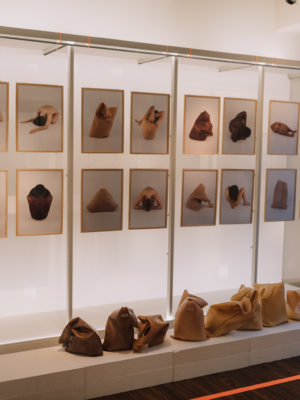
For context, what is your background? What did you do before, and how did you become connected to the Tassenmuseum?
In the past, I worked together with Li Edelkoort in Paris and then together with Jil Sander, as creative manager in Hamburg in the 90s (when she became the ‘Queen of Clean’). In ‘98 I opened my own studio here in Amsterdam, but I was rarely in Amsterdam myself. I travelled quite a bit, so I was often in Paris, New York, Milan and even Seoul.
I created inspirational magazines, such as View on Colour, Bloom and Provider Magazine, luxury retail strategies, Le Bon Marche, new perfume concepts and brand & image strategies for fashion houses. My job was and still is to provide ideas and strategies and to plant seeds. I have a vision, and I bring people and talent together to make it happen.
Then, eight years ago, together with a friend, I created SALON here in Amsterdam. A cultural event with the mission of getting fashion off the catwalk, design out of gallery and art out of the museum. We created a tour around town with presentations in private houses, less known museums, and churches: places that visitors to Amsterdam would hardly visit. I am always looking for the space between humans objects and places. I’m very much in favour of negative space because there is a lot of creative energy in the space in-between.
In November of last year, I was asked to come to the Tassenmuseum to provide my vision for the museum as a consultant and I started to envision its potential. When you enter this museum-house for the first time, that’s not always what you see, but I felt that I could do some magic together with its team for the museum by combining my skills as an editor and creative director and a background in culture, fashion, design and with a healthy dose of entrepreneurship. Now I have a platform and get to work with a fantastic team who have become part of my extended family. It’s so nice to share this experience with them, and what could be better than working in a historical house on a canal in Amsterdam? In a way, I came home.
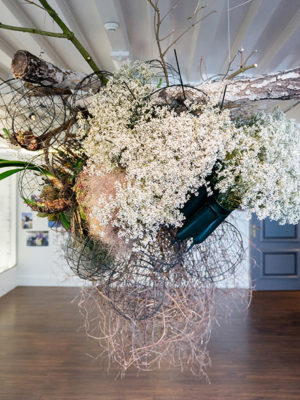
How do you think your background in fashion has influenced your vision for the Tassenmuseum?
What is of interest to me is that we, the museum and the collection, are related to fashion, because, at its root, a bag is a fashion item within the fashion industry. Fashion houses use bags as a marketing and communication tool, I think it is important that we acknowledge that the bags come with a fashion mentality. When you think about the word ‘mode’ in French, it means ‘manner,’ it means ‘attitude,’ it means ‘mentality.’ I think it is important that we are always looking and opt for emergent visions, talents and new ideas in connection with distinct mentalities. You have to know what’s happening in the world, and you can’t do it by yourself.
For example, brands, high and low, are looking for cross-disciplinary collaborations, which I’m very fond of. Such as the cross-fertilisation between brands and designers. For instance, we have the designer of Balenciaga using the colors of the Ikea bag on a Balenciaga bag. Something which costs 25 cents is suddenly 2,500 Euros! Now, Ikea is asking a top designer like Virgil Abloh, who is not a fashion designer but an architect, to design the Ikea bag while he is the creative Director for Louis Vuitton menswear! The industry is changing and we, as people and consumers, need to be aware of that. It is important to feed people because we are all part of this change. I feel that my role as the director of the museum is to give, next to our cultural programme, designers the opportunity to show their work, to start an interaction or dialogue, and to develop through being challenged. To create a dialogue by showing different perspectives of the bag, for residents, visitors and creative, local, national and international.
This article is published in the OBSESSED! Jewellery Festival Paper.
OBSESSED! is a biennial jewellery festival taking place in various cities across the Netherlands. OBSESSED! unites the best jewellery-related events – museum and gallery exhibitions, talks, fairs, book presentations and artist open studios – into one intriguing programme put together by Current Obsession.
